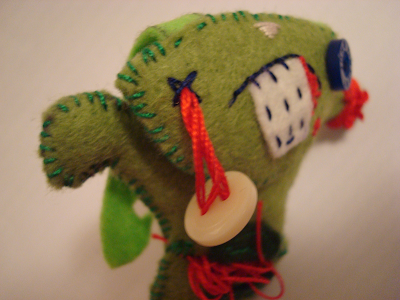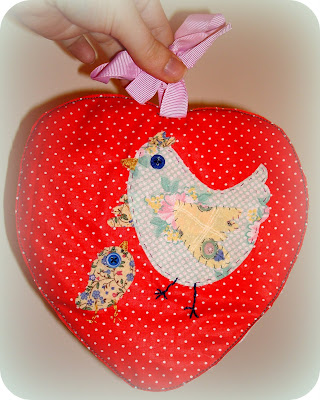 |
| 'Zombie Bunny', made from pattern in Zombie Felties, Nicola Tedman & Sarah Skeate, 2010 |
Partly this popularity could be attributed to series of successful films about zombies, and their excellence as a video game subject. But there must be more to this. The fact there are so many zombie films is because of their instant popularity which cannot be due to the films alone. I like Dan Birlow's analysis of their popularity. He accesses various theories such as that zombies reinforce paranoid belief systems, or that it is a like of being scared of turning into one that makes them popular but then comes to the conclusion that is because people like imagining themselves as survivors in an apocalyptic situation.
Somehow though zombies can also be amusing. This humour can be seen in Nicola Tedman's and Sarah Skeates excellent book Zombie Felties: How to raise 16 gruesome creatures from the undead. I have been playing with this book and used it to make the following felt zombies:
It is lots of fun and the patterns are easy to follow. I recommend it heartily to all who wish to make their own fleet of mini-zombies.












